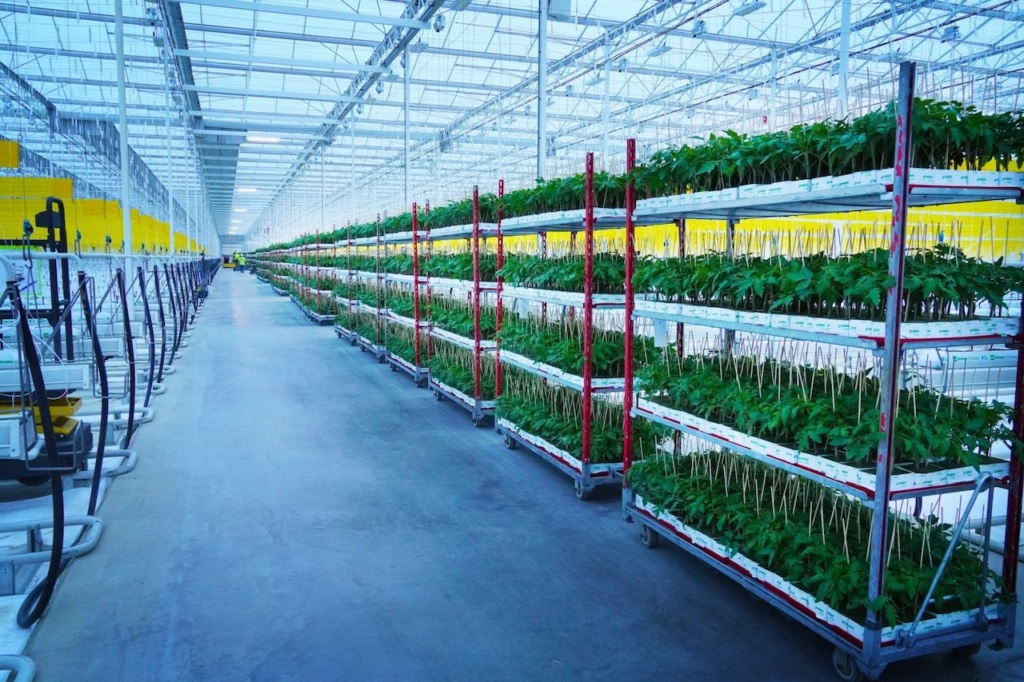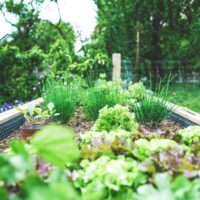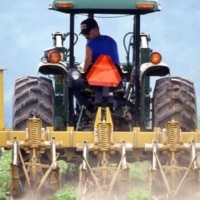While officials at an indoor farming operation in Kentucky say their plan to re-invent agriculture in Appalachia is on track, experts are wondering whether their plan remains financially viable after a low earnings report.
In November, AppHarvest’s third quarter earnings call reported net quarterly sales of only $542,000, a precipitous drop from earnings earlier in the year. Loren Eggleton, AppHarvest’s chief financial officer, said that the low numbers were due to crop health issues. The poor sales left the company with a net loss of over $24 million.

Travis Parman, the company’s chief communications officer, said those aren’t losses. The negative balance includes capital investments the company has made to build out its four farms located across rural Kentucky. And those revenues, he said, only reflect sales on one crop.
“The thing that seems to be confusing for a lot of folks is that what gets qualified as those losses are also investments in the farms,” he said. “We’re a little bit unusual since we went public while we were still in hyper growth mode. A lot of people get confused thinking those losses are just cash spent, instead of investments in assets that hold long-term value like the farms and equipment we’re putting in.”
Those farms – a 15-acre farm in Berea growing salad greens; a 30-acre facility in Somerset growing berries and English cucumbers, and a 60-acre facility in Richmond growing tomatoes – will join the initial 60-acre facility in Morehead that also grows tomatoes through controlled environment agriculture (CEA). Parman said the expanded crops, as well as a change in the varieties of tomatoes the company grows, will bring in more revenue.
The company said it expects to harvest 10 miles of lettuce a day in Berea. Already workers at the Somerset facility have planted nearly 1 million strawberry plants and will rotate crops there between berries and cucumbers. Adding the Richmond facility, the company said, will allow it to grow 1.5 million tomato plants across a combined 120 acres.
“A lot of what enables the profitability is the scale,” Parman said. “So when you’re able to have literally millions of plants in a small area where you’ve got crop care specialists who can efficiently harvest and pack those harvest, and you’re reducing your food miles based on where you’re distributing those harvests, you get a higher quality product that’s having to travel a shorter distance. Also, when you can grow year round and you’ve got facilities that are going to have a projected 20 to 30 year efficient life – that’s where the opportunity comes in to recoup those investments.”
Still, questions remain about whether the CEA company can turn a profit before its money runs out.
“The best high tech in agriculture will not overcome a bad business model based on selling a commodity product—tomatoes–in a highly competitive market,” James Branscome, retired managing director of Investment Analysis, S&P Global, said in an email interview. (Disclosure: Branscome has made financial donations to the Daily Yonder.) “AppHarvest does use the highest tech in greenhouse production from the Netherlands, and its commitment to Appalachian Kentucky has rightfully given it a very high profile. The strategy of moving beyond the tomato market to vegetables and berries is a good business strategy, however, the company is in a race against the oldest challenge in business: can it execute that strategy when the business cash flow is so dismally poor?”
For the first nine months of 2021, AppHarvest had sales of $5.9 million, based solely on the Morehead tomato crop. In the nine months of 2022, it was more than $10 million. But it cost the company $30 million to grow those tomatoes in 2021, and $34 million in 2022. Overall, according to the company’s third quarter report, for the nine months of 2022, the company realized an $83 million loss.
Parman said the company was working on securing additional funding. One possible solution, the company said in its earnings report, was to sell its Berea facility and lease back the buildings and equipment on it.
Parman said the company is switching to tomato varieties that will increase its profits. Once fully planted, the tomato crop will be 50% beefsteak, 25% tomatoes on the vine and 25% snacking tomatoes – all of which get higher prices per pound, he said.
“This season, we are growing an increased number of higher-priced snacking varietals and campari tomatoes on the vine for which the market price historically has ranged two times to six times higher than the per pound price referenced in (the earnings statement),” he said. “Third quarter tomato market pricing tends to be at its lowest because open-field fruit is on the market then.”
And because they’re grown in a controlled environment, the company can take advantage of a longer growing season.
But just because a crop is grown indoors doesn’t mean it doesn’t face horticultural issues, Randy Gardner, professor emeritus in horticultural science with North Carolina State University.
Greenhouse tomatoes are subject to diseases just like regular tomatoes, but because they are so close to each other and must be handled every day, it makes them more prone to infection, Gardner said. And growing that many plants indoors will require a lot of work, he said.
“You know, it’s a tremendous amount of labor to grow a crop like that and have it producing for nine months,” Gardner said. “That’s a lot of plants per acre.”
Parman said that bringing good jobs to Appalachia was part of the company’s mission. Farm workers at AppHarvest can start out at $28,000 a year with benefits and the opportunity to earn productivity bonuses. AppHarvest employs an estimated 700 workers across the four farms currently, he said.
Gardner said providing those jobs to locals could also put a financial strain on the company. Other large farm operations use migrant laborers and don’t pay as much. Using local labor may also mean paying more for workers who aren’t as experienced with farm work.
AppHarvest’s founder, Jonathan Webb, said during the company’s earning’s call, that the market is there for companies like AppHarvest to flourish.
“The domestic need for CEA continues to grow,” he said. “We believe that the U.S. remains significantly underbuilt.”
A larger need for food grown in America and changing weather patterns make CEA a necessary innovation in American agriculture.
But questions remain as to whether AppHarvest will be that innovator.
“At this point their future depends more on financial engineering than agricultural engineering,” Branscome said. “There is value in what they have constructed, but the cash flow from operations is so small that there is no way sales can bail them out over the next few years.”
This article first appeared on The Daily Yonder and is republished here under a Creative Commons license.






